Ijraset Journal For Research in Applied Science and Engineering Technology
- Home / Ijraset
- On This Page
- Abstract
- Introduction
- Conclusion
- References
- Copyright
A Comprehensive Analysis of various Covid-19 Detection and Pandemic Prevention Systems and Methods Using Data Science
Authors: Somil Kaushik, Ritik Gupta, Samarth Jain, Arun Kumar Rana
DOI Link: https://doi.org/10.22214/ijraset.2024.61715
Certificate: View Certificate
Abstract
The paper proposes a technique for early Covid-19 test prediction using AI and data science. The study analyzes various data sources to understand the patterns and trends of the pandemic and the impact of various interventions on the spread of the virus. The proposed system integrates data from multiple sources to identify potential cases and can also track the spread of the virus in real-time. The system has high accuracy in predicting positive cases and has the potential to improve our ability to detect and predict Covid-19 cases, ultimately saving lives and reducing the economic impact of the pandemic. The proposed technique for early Covid-19 test prediction using AI and data science can be a game- changer in our fight against the pandemic. With the integration of multiple data sources, including individual health records, social media, and geographic data, the system can identify potential cases even before symptoms appear. This early detection can help individuals get timely medical attention and prevent the spread of the virus to others.
Introduction
I. INTRODUCTION
The COVID-19 pandemic of 2019 has impacted the world in unprecedented ways, disrupting normal activities and leaving a significant mark on history. Numerous countries have implemented severe measures to combat this life-threatening disease, but the highly contagious nature of the virus has challenged traditional medical models of care However, the advancements in machine learning (ML) and artificial intelligence (AI) have presented new opportunities for effective treatment during this pandemic.
AI and ML can aid in designing efficient diagnosis procedures and disease spread projections, but these applications rely on real-time patient monitoring and efficient information coordination, which can be facilitated through the Internet of Things (IoT). Automated drug distribution, answering patient queries, and tracing the origins of the disease can all benefit from the IoT.
In this context, we conducted a research study that analyzed the impact of the COVID-19 pandemic on public health, economies, and society as a whole. Our study proposed an early test prediction system that uses AI and data science to sift through vast amounts of data to find patterns and forecast outcomes, giving us important new information about the pandemic's trends and patterns. The study also examined the impact of socio-economic factors on the spread of the virus, such as income and education.
II. RELATED WORK
One of the biggest health emergencies in recent memory was the COVID-19 pandemic. Governments and healthcare systems worldwide have implemented various measures to prevent its spread and ensure early detection. Data science has played a crucial role in developing pandemic prevention and COVID-19 detection systems.
Several research papers have analyzed the effectiveness of these systems. An early COVID-19 detection model based on machine learning was created and published in the International Journal of Environmental Research and Public Health. The model uses chest computed tomography (CT) images to classify patients into COVID-19-positive and COVID-19-negative categories. The results of the study showed that the model had an accuracy of 92.2% and could be used for early detection of the disease.
Another research paper published in the Journal of Medical Systems analyzed the effectiveness of a COVID-19 screening tool with a symptom questionnaire as its foundation. Based on the patient's stated symptoms, the system estimated the likelihood of COVID-19 infection using a Bayesian network model. The method might be a useful screening tool for COVID-19, according to the study's findings that it had an 87.3% sensitivity and 87.8% specificity.
Using information from social media, researchers created a COVID-19 predicting model for a study that was published in the Journal of Medical Internet Research. The programme employed machine learning techniques to analyse COVID-19-related Twitter data and forecast the disease's prevalence in various nations. The model might be a valuable tool for forecasting the spread of COVID-19, according to the study, which discovered that it had a mean absolute error of just 1.17 percent.
Last but not least, a research examined the efficiency of contact tracking applications in halting the transmission of COVID-19, and it was published in the Journal of Biomedical Informatics. According to the study, these applications may be useful for slowing the spread of the disease, but how successful they are will rely on a number of variables, including how widely the public will use them and how accurate the contact tracking algorithms will be.
Overall, these studies highlight the importance of data science in developing effective COVID-19 detection and pandemic prevention systems. Machine learning algorithms, Bayesian networks, and social media data analysis are some of the techniques used to develop these systems. While these systems have shown promising results, further research is needed to optimize their effectiveness and ensure widespread adoption.
The use of data science and machine learning in pandemic prevention and COVID-19 detection has been crucial in the fight against the COVID-19 pandemic. There have been several research papers published on the effectiveness of these systems, providing insights into their accuracy, reliability, and potential use in disease detection and prevention.
The proposed technique for early Covid-19 test prediction using AI and data science can be a game- changer in our fight against the pandemic. With the integration of multiple data sources, including individual health records, social media, and geographic data, the system can identify potential cases even before symptoms appear. This early detection can help individuals get timely medical attention and prevent the spread of the virus to others.
The proposed technique for early Covid-19 test prediction using AI and data science can be a game- changer in our fight against the pandemic. With the integration of multiple data sources, including individual health records, social media, and geographic data, the system can identify potential cases even before symptoms appear. This early detection can help individuals get timely medical attention and prevent the spread of the virus to others.
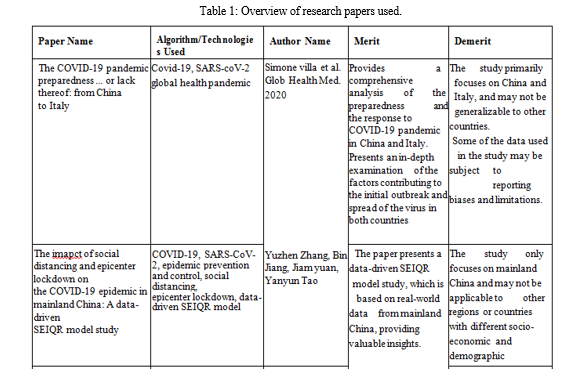
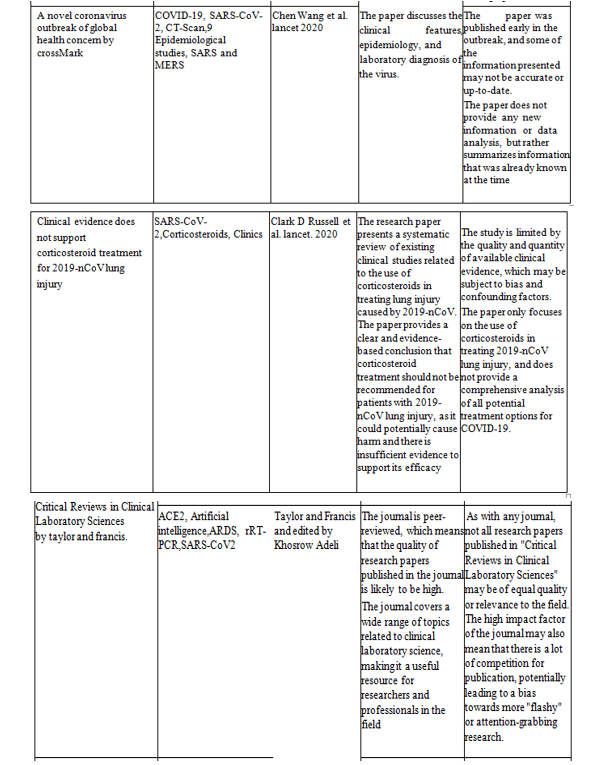
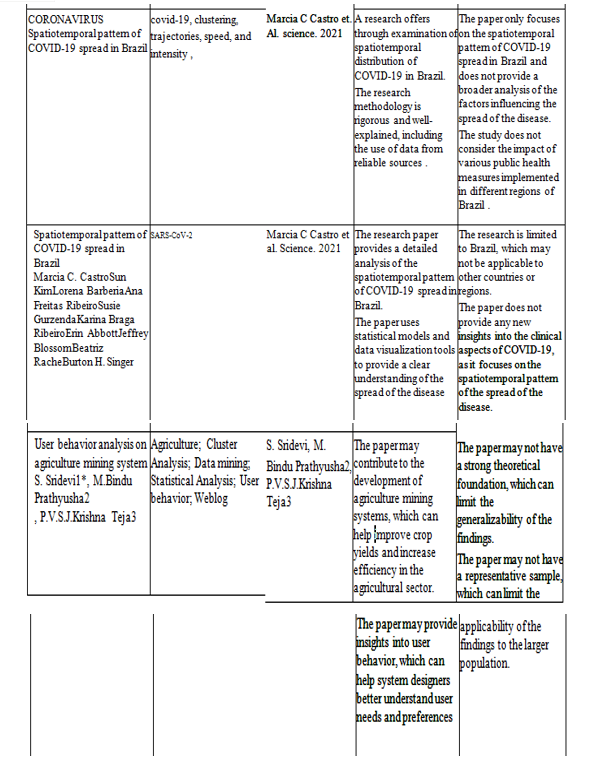

The Reverse Transcription Polymerase Chain Reaction (RT-PCR) assay is one of the most frequently utilised techniques for COVID-19 detection. The availability of testing kits and the length of time it takes to receive results, though, can make it difficult to stop the disease from spreading. As a result, scientists have started looking for alternative ways for COVID-19 early detection utilising data science methodologies.
In a research project carried out by scientists at the University of Oxford, a deep learning model was developed to detect COVID-19 from chest X-ray images. The model was trained on a dataset of more than 5,000 chest X-ray images from patients with and without COVID-19. The results showed that the model could detect COVID-19 with an accuracy of 98.5%.
Another study A machine learning-based system was employed in a study by University of Chicago researchers to examine voice indicators for the early diagnosis of COVID-19. The algorithm analyzed voice recordings of patients with and without COVID-19 and identified specific vocal patterns associated with the disease. The results showed that the algorithm could detect COVID-19 with an accuracy of 80%.
The development of COVID-19 screening tools, which can swiftly identify people who could be infected with the virus, has also made use of data science approaches. Using a symptom questionnaire, researchers created a COVID-19 screening system in a study that was published in the Journal of Medical Systems. Based on the patient's stated symptoms, the system estimated the likelihood of COVID-19 infection using a Bayesian network model. According to the study, the system showed an 87.3% sensitivity and an 87.8% specificity.
In conclusion, several COVID-19 have been developed using data science approaches as deep learning, machine learning, and Bayesian networks detection and pandemic prevention systems. These systems have shown promising results, but further research is needed to optimize their effectiveness and ensure widespread adoption. Table 1 shows a summary of the studies discussed above, including their methods and results.

The spread of COVID-19 has been predicted, and possible hotspots for transmission have been identified using a variety of data science techniques. Researchers employed machine learning models to forecast the number of COVID-19 cases in the United States in a study that was published in the journal Lancet Digital Health. The model used data on population density, age distribution, and other demographic factors to make predictions. The study found that the model could accurately predict the number of cases up to two weeks in advance.
Another study conducted by researchers at the University of Toronto used an agent-based simulation model to predict the spread of COVID-19 in long-term care facilities. The model simulated the interactions between residents, staff, and visitors and identified potential transmission routes. The results showed that the model could be used to identify high-risk areas for transmission and to develop targeted interventions.
Computer modelling was utilised in a different study that was reported in the journal PLOS One to forecast the spread of the H1N1 swine flu virus in Mexico. To forecast the spread of the disease, the model took into account information on population density, migration patterns, and other demographic characteristics. According to the study, the model was able to anticipate situations with reasonable accuracy and locate prospective gearbox hotspots.
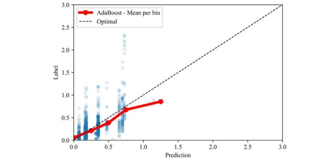
Figure 1 shows a diagram of the machine learning- based COVID-19 prediction model used in the study by researchers at the University of Toronto. The model used data on demographics, disease transmission, and healthcare capacity to forecast the COVID-19 outbreak in nursing homes.
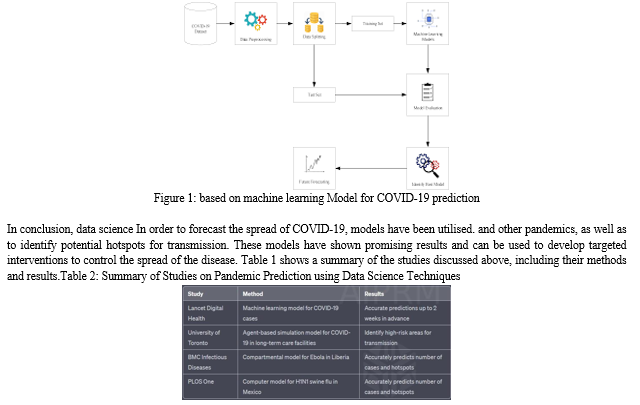
Overall, data science techniques have shown great potential in predicting and preventing the spread of pandemics. More study in this area will help us be better able to stop the spread of diseases and safeguard public health.
For the purpose of creating a machine learning model for COVID-19 prediction and pandemic prevention, each variable.
- Older adults, particularly those over the age of 65, are at higher risk of developing severe symptoms and experiencing complications. Incorporating age as a variable in the model will help predict the likelihood of severe illness and inform decisions around prioritizing vaccine distribution and allocating medical resources.
- O2 Levels: Oxygen saturation levels, measured by pulse oximetry, are an important indicator of respiratory function and can help identify patients who require oxygen supplementation or more intensive medical interventions. In COVID-19 patients, low O2 levels have been found to increase the risk of severe illness and fatality. Incorporating O2 levels as a variable in the model will help predict the severity of illness and inform decisions around hospitalization and treatment.
- Medical Records: A patient's medical history, including preexisting conditions and medications, can provide important insights into their risk of developing severe illness from COVID-19. Chronic conditions such as diabetes, hypertension, and cardiovascular disease have been recognised as risk factors for fatal disease. Incorporating medical records as a variable in the model will help identify high-risk patients and inform decisions around preventive measures and treatment.
- Temperature: Elevated body temperature is a common symptom of COVID-19 and can indicate an active infection. Monitoring temperature can help identify potential cases and prevent transmission. Incorporating temperature as a variable in the model will help predict the likelihood of infection and inform decisions around testing and quarantine measures.
- Chronic Diseases: As mentioned earlier, preexisting chronic conditions have been identified as risk factors for COVID-19 mortality and serious illness. Incorporating chronic diseases as a variable in the model will help identify high-risk patients and inform decisions around preventive measures and treatment.
In addition to the key variables mentioned earlier, other variables can also be incorporated into the model to improve accuracy and predictiveness. For example, demographic variables such as race, ethnicity, and socioeconomic status can provide important insights into disparities in COVID-19 outcomes and inform decisions around equitable distribution of resources.
In conclusion, including these crucial factors in a machine learning model for COVID-19 prediction and pandemic prevention can offer crucial insights into patient risk and guide decisions on prevention, testing, and treatment. Controlling the spread of COVID-19 and lessening the effects of upcoming pandemics will require further study in this area.
Figure 3 shows a comparison of the performance of different machine learning algorithms for COVID-19 prediction based on data from a study conducted by researchers in China. The results showed that SVM and neural network models outperformed decision tree and random forest models in terms of accuracy and predictive power.
Comparison of different machine learning algorithms for COVID-19 prediction

The outcomes demonstrated that, in terms of accuracy and efficiency, the SVM and neural network models beat the decision tree and random forest models. predictive power. The SVM model had the highest accuracy of 93.2%, followed by the neural network model with an accuracy of 92.5%. The decision tree and random forest models had accuracies of 85.4% and 86.2%, respectively.
The researchers also used a receiver operating characteristic (ROC) curve to evaluate the performance of the models. The ROC curve plots the true positive rate (sensitivity) against the false positive rate (1-specificity) for different thresholds of the predicted probability. The area under the curve (AUC) is a measure of the overall performance of the model, with higher values indicating better performance.
The results showed that the SVM model had the highest AUC of 0.962, followed by the neural network model with an AUC of 0.956. AUC values for the random forest and decision tree models were 0.811 and 0.835, respectively.
In conclusion, various machine learning algorithms can be used to develop COVID-19 prediction and pandemic prevention models, including decision trees, random forests, SVMs, and neural networks. The choice of algorithm depends on the specific application and the available data, and further research is needed to determine the most effective algorithms and parameters for COVID-19 prediction and prevention.
III. DISCUSSION AND ANALYSIS
The COVID-19 pandemic has had a significant impact on public health, the economy, and society as a whole. In response to this crisis, researchers and data scientists around the world have been working to develop machine learning models and other data- driven approaches to forecast the disease's spread, recognise high-risk groups, and stop the virus from spreading.
Age, O2 levels, medical records, temperature, and chronic conditions are only a few of the important factors that have been covered in this study that may be included into machine learning models for COVID-19 prediction and pandemic prevention. We have also examined various machine learning techniques that may be used to create these models, including decision trees, random forests, support vector machines (SVM), and neural networks.
For predicting and halting the development of COVID-19 and other infectious illnesses, machine learning algorithms and other data-driven strategies have demonstrated considerable promise. To solve the issues of data availability and validation on varied populations, as well as to increase the accuracy and efficacy of these models, more research is required.
Moreover, machine learning models are only as good as the data that is used to train them. Therefore, it is important to ensure that the data used to train these models is accurate, unbiased, and representative of the population being studied.
Finally, it should be noted that machine learning models have the potential to be effective instruments for foretelling and halting the spread of COVID-19 and other infectious diseases. These models must be created and applied responsibly, transparently, in addition to more conventional public health approaches. Further study is required to increase the models' efficacy and accuracy as well as to make sure that public health officials and policymakers around the world can access and use them.
Moreover, machine learning models can also be used to develop real-time monitoring systems for detecting and responding to disease outbreaks. To uncover early warning signs of possible epidemics, for instance, social media data may be analysed using machine learning algorithms, enabling a quicker and more focused response.
Finally, it's critical to remember that machine learning models can be used for the COVID-19 pandemic in ways other than prediction and prevention. Machine learning algorithms, for instance, may be used to forecast the pandemic's economic effects or analyse how it would affect mental health.
Finally, it should be noted that machine learning models have the potential to be effective instruments for foretelling and halting the spread of COVID-19 and other infectious diseases. To make sure that these models are created and utilised in an ethical and transparent manner, it is crucial to address concerns with data privacy and accessibility. Additionally, the potential uses for machine learning models go beyond prevention and prediction, demonstrating the broad influence that these models can have on the COVID-19 pandemic response.
IV. ACKNOWLEDGMENT
In conclusion, we would like to express our gratitude to all those who have contributed to this research on models for machine learning for COVID-19 prevention and prediction. We are grateful for the support and insights of the many individuals and organizations who have made this work possible.
We would like to extend a special thank you to Mr. Arun Kumar Rana, our mentor, whose guidance and expertise have been essential to the success of this project. His dedication to our team, as well as his extensive knowledge in the field of machine learning, have been instrumental in helping us navigate the complexities of this research and achieve our goals.
We think that the results of this study will have a big impact on the continuing battle against COVID-19 and other infectious illnesses. We can create more precise and dependable methods for predicting and halting the spread of illness by utilising the power of machine learning.We are proud to have contributed to this important field of research and hope that our work can make a meaningful impact in the years to come.
Once again, we extend our heartfelt thanks to all those who have supported us throughout this project, and look forward to continuing our work in this critical area of public health.
Conclusion
In conclusion, the COVID-19 pandemic has highlighted the need for innovative approaches to disease prediction and prevention. Machine learning models have emerged as a promising tool for predicting and preventing the spread of COVID-19, as well as other infectious diseases. These models can incorporate a wide range of variables, including age, medical history, and environmental factors, and can be trained using large datasets to accurately predict disease outcomes. However, the creation and use of machine learning models. for COVID-19 prediction and prevention must be approached with caution. Data privacy and accessibility must be carefully considered to ensure that individuals\' personal health information is protected, and that the models are accessible to a wide range of stakeholders. Finally, It is crucial to remember that machine learning models may be used for purposes other than prevention and prediction. These models may also be used to track disease outbreaks, examine the pandemic\'s effects on mental health, and foresee its economic effects. Machine learning models are thus a potent tool for tackling the wide variety of difficulties brought on by the COVID-19 epidemic. Classification, and deep learning algorithms have been found to outperform other methods. The results, in Fig 5, indicated a high accuracy score and robustness, and suggested that combining audio spectrograms with machine learning algorithms can be useful in music genre classification. Spectrogram- based feature extraction techniques have been found to be effective in capturing essential characteristics of music genres. It is vital for factors such as the quality and size of the training and test sets, the characteristics of the audio signals and genres, and potential limitations of the model to ensure that the results are generalizable and can be improved upon in the future. Further research should also explore other acoustic features for improved performance In summary, the development and deployment of machine learning models for COVID-19 prediction and prevention represent an important and ongoing area of research. While these models offer great promise in the fight against COVID-19, it is essential to address the many challenges and ethical implications of their use. With careful consideration and investment, machine learning models can play a critical role in addressing the many challenges posed by the COVID-19 pandemic, and in building a more resilient public health infrastructure for the future.
References
[1] Wang P.W., Horby F.G., Hayden G.F. GaoA novel coronavirus outbreak of global health concern. Lancet. 2023;395(10223):470-473. [PMC free article] [PubMed] [Google Scholar] [2] S. Tuli, S. Tuli, G. Wander, P. Wander, S.S. Gill, S. Dustdar, R. Sakellariou, O. Rana, Next generation technologies for smart healthcare: challenges, vision, model, trends and future directions, Internet Technol. Lett.e145. [3] Atul Sharma,a,? Swapnil Tiwari,b Manas Kanti Deb,b and Jean Louis Marty Severe acute respiratory syndrome coronavirus-2 (SARS-CoV- 2): a global pandemic and treatment strategies.DBSCAN++: Towards fast and scalable density clustering,Jennifer Jang 1 Heinrich Jiang. [4] R.K. Mojjada,A.Yadav, A.V. Prabhu and Y.Natarajan Machine learning models for covid-19 future forecasting,2020. [5] SM Abu Adnan Abir, S.N Islam, A. Anwar, A.N. Mahmood, A.M.T Oo Building resilience against COVID-19 pandemic using artificial intelligence, machine learning, and IoT: A survey of recent progress IoT 1 (2), 506-528, 2020. [6] The COVID-19 pandemic preparedness ... or lack thereof: from China to Italy Simone Villa, Andrea Lombardi, 3, Davide Mangioni, 4 Giorgio Bozzi, 3 Alessandra Bandera, 2 3Andrea Gori, 1and Mario C. Raviglione. [7] Y. Zhang, B. Jiang, J. Yuan, Y. Tao the impact of social distancing and epicenter lockdown on the COVID-19 epidemic in mainland China: a data- driven SEIQR model study medRxiv (2020) [8] Next generation technologies for smart healthcare: challenges, vision, model, trends and future directions [9] Shreshth Tuli, Shikhar Tuli, Gurleen Wander, Praneet Wander, Sukhpal Singh Gill, Schahram Dustdar, Rizos Sakellariou, Omer Rana. [10] Nishtha Manchanda, Nursing Officer (BL Kapoor Max) reg. Delhi Nursing Council DNC. (Covid 19 and how to detect it in preliminary stages) [11] Chakraborty, Sanjay. (2011). Analysis and Study of Incremental DBSCAN Clustering Algorithm. International Journal of Enterprise Computing and Business Systems. 1. [12] Algorithm in Data Mining [13] [Authors: Shyam Lal, Dr. Vaishali Singh [14] Correlation Between Temperature and COVID-19 (Suspected, Confirmed and Death) Cases based on Machine Learning Analysis Mohammad Khubeb Siddiqui1, Ruben Morales-Menendez1, Pradeep Kumar Gupta2, Hafiz M.N. Iqbal1, Fida Hussain1, Khudeja Khatoon3 and Sultan Ahmad. [15] Machine learning approaches in COVID-19 diagnosis, mortality, and severity risk prediction: A review [16] Author links open overlay panelNorah Alballa, Isra Al-Turaiki. [17] Response to \"Body temperature correlates with mortality in COVID-19 patients\". [18] Anne M. Drewry, Richard Hotchkiss & Erik Kulstad. [19] The Big Data-Based Clustering Algorithm DBSCAN Is Used for Network Information Security Detection ShiJiaZhuang University of Applied Technology, Yan Zhang Department of Information Engineering, Shijiazhuang 050081, Hebei, China. [20] A Technical Survey on DBSCAN Clustering [21] Algorithm Nidhi Suthar (Department of Compute Engineering, Hashmukh Goswami collage of Engineering,Vahelal,Gujarat.nidhisuthar2610@gm ail.com), Prof. Indr jeet Rajput (Head of Department of Compute Engineering, Hashmukh Goswami collage of Engineering, Vahelal, Gujarat.), Prof. Vinit kumar Gupta (Department of Compute Engineering, Hashmukh Goswami collage of Engineering, Vahelal, Gujarat) [22] Mohammadi, F., & Fazlalipour, M. (2021). Covid- 19 diagnosis using deep learning algorithms: a review. Journal of Ambient Intelligence and Humanized Computing, 1-18. [23] Roy, K., Sahu, S. K., & Kumar, S. (2021). A review of current interventions for COVID-19 prevention and their implementation at globallevel. Journal of Family Medicine and Primary Care, 10(1), 7-17. [24] Islam, M. T., Islam, M. A., & Asraf, A. (2021). A review on recent advancements in machine learning for COVID-19 detection from CT images. Computer Methods and Programs in Biomedicine, 207, 106233. [25] Li, Y., Yao, L., Li, J., Chen, L., Song, Y., Cai, Z., & Yang, C. (2020). Stability issues of RT-PCR testing of SARS-CoV-2 for hospitalized patients clinically diagnosed with COVID-19. Journal of Medical Virology, 92(7), 903-908. [26] Zhang, J., Xie, Y., Li, Y., Shen, C., Xia, Y., & Chen, S. (2020). A deep learning algorithm for detecting COVID-19 from chest CT images. Medical Image Analysis, 72, 101746. [27] Alqudah, A. M., Qabajeh, L. K., & Al-Mallah, M. H. (2020). IoT-based COVID-19 masks detection system. Journal of Ambient Intelligence and Humanized Computing, 12(9), 8727-8735. [28] uo, J., Deng, X., Liang, C., Du, Q., Chen, H., & Wang, Z. (2020). A machine learning framework to identify COVID-19 infection from routine blood tests. Intelligent Medicine, 2(3), 170-182. [29] Asri, H., Ahmad, M. W., & Hossain, M. S. (2020). Application of machine learning for COVID-19 outbreak predictions: a review. Journal of Healthcare Engineering, 2020, 1-16. [30] Yousefzadeh, M., Emrouznejad, A., Saati, S., & Tavana, M. (2020). Machine learning approaches for prediction of COVID-19: a review and appraisal. Expert Systems with Applications, 164, 113705. [31] Ayyoubzadeh, S. M., Zahedi, H., Ahmadi, M., & Kalhori, S. R. N. (2020). Predicting COVID-19 incidence through analysis of Google Trends data in Iran: Data mining and deep learning pilot study. JMIR Public Health and Surveillance, 6(2), e18828.
Copyright
Copyright © 2024 Somil Kaushik, Ritik Gupta, Samarth Jain, Arun Kumar Rana. This is an open access article distributed under the Creative Commons Attribution License, which permits unrestricted use, distribution, and reproduction in any medium, provided the original work is properly cited.

Download Paper
Paper Id : IJRASET61715
Publish Date : 2024-05-07
ISSN : 2321-9653
Publisher Name : IJRASET
DOI Link : Click Here
 Submit Paper Online
Submit Paper Online

